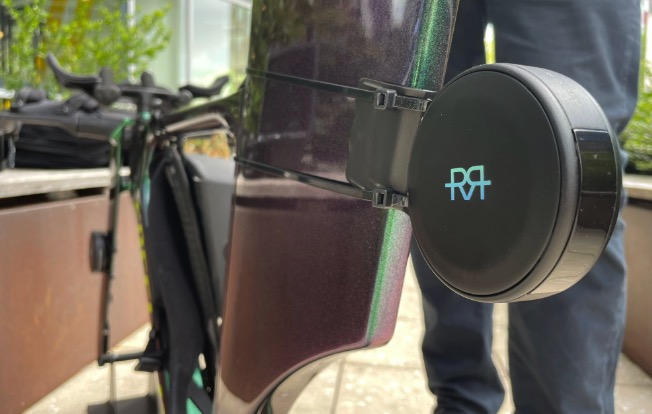In 2019 the first “basic” version was tested during the WTCS-finals in Lausanne and since then the team behind RaceRanger – an anti-drafting “gadget” – worked hard to process all the feedback. Still, they regularly update and improve their product, which should essentially help to prevent drafting, but has much more to offer. Co-founder and CEO James Elvery visited our office for a demonstration.
The trip was long – Elvery comes from New Zealand – but The Netherlands isn’t his only stop along the way. He’s been traveling through Europe for a few weeks already to talk to all interested parties and to demonstrate how RaceRanger can be of added value.
RaceRanger is a system that consists of a UWB-tracker (Ultra-wideband, more accurate than GPS) mounted on the bikes of two athletes – one on the fork and one underneath the seat post – to indicate whether an athlete enters the drafting zone. The tracker that’s mounted on the seat post has a light that starts to flash when the athlete behind comes too close; for instance, because of entering the 12 or 20 meter zone. The light will tell the athlete that it’s time to take over or to hold the legs still in order to widen the gap.
*In the video below, you will see the UWB-tracker mounted on the bike. Later, you will see how the light starts to flash when another UWB-tracker (in this case held by Elvery) comes withing the draft zone.
The best detail: the referees will follow everything through an app and get an update of athletes who draft. Even better: they will be provided with a complete overview of how often and how long an athlete has come too close to their opponent, or they will see that an athlete has done everything in their power to keep the right distance and thus race fair. There will be multiple “base stations” along the way to guarantee the connection between all trackers and the app. Officials can mark in the app which athletes will have to serve a penalty. That information will be sent directly to the race officials in the penalty box.
Text continues below picture
“We don’t set the rules”
“We don’t want to change the rules of triathlon”, Elvery explains. “That means the system will only provide the referees with information. What they end up doing with the information, is up to them. We don’t set the rules; that’s what the federations do. We only provide insight into what happens during a race.”
Text continues below picture
Many possibilities
The possibilities are endless. For instance, officials can communicate with each other through the RaceRanger app, share photos or athletes who break a rule, but it’s also possible to show spectators where “their” athlete is currently at. “We hope to end up working together with timing organizations”, Elvery, who hopes to make national federations and race organizations enthusiastic with their product, said. “It’s all about the information. We can share it with them fairly easily.”




